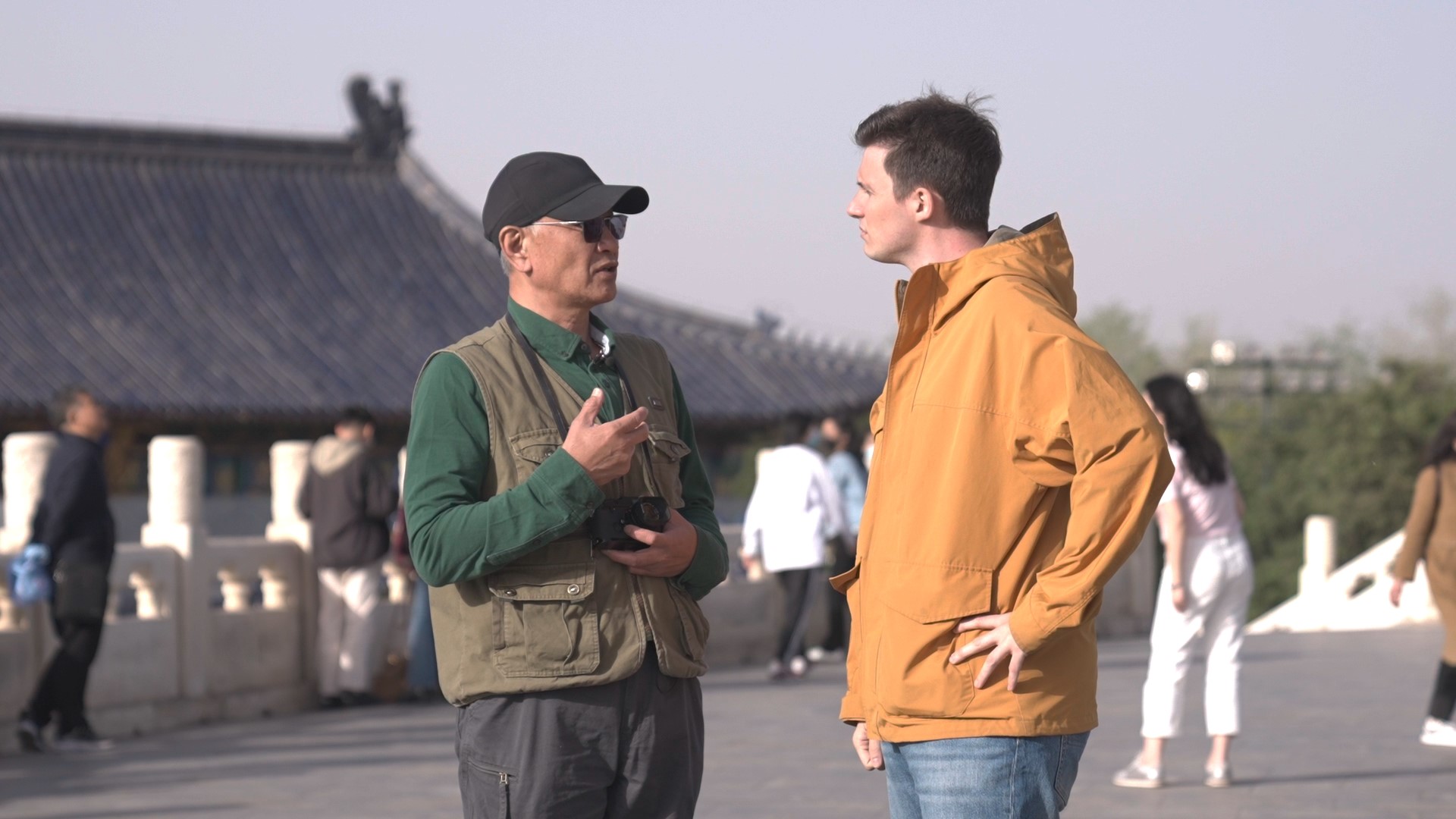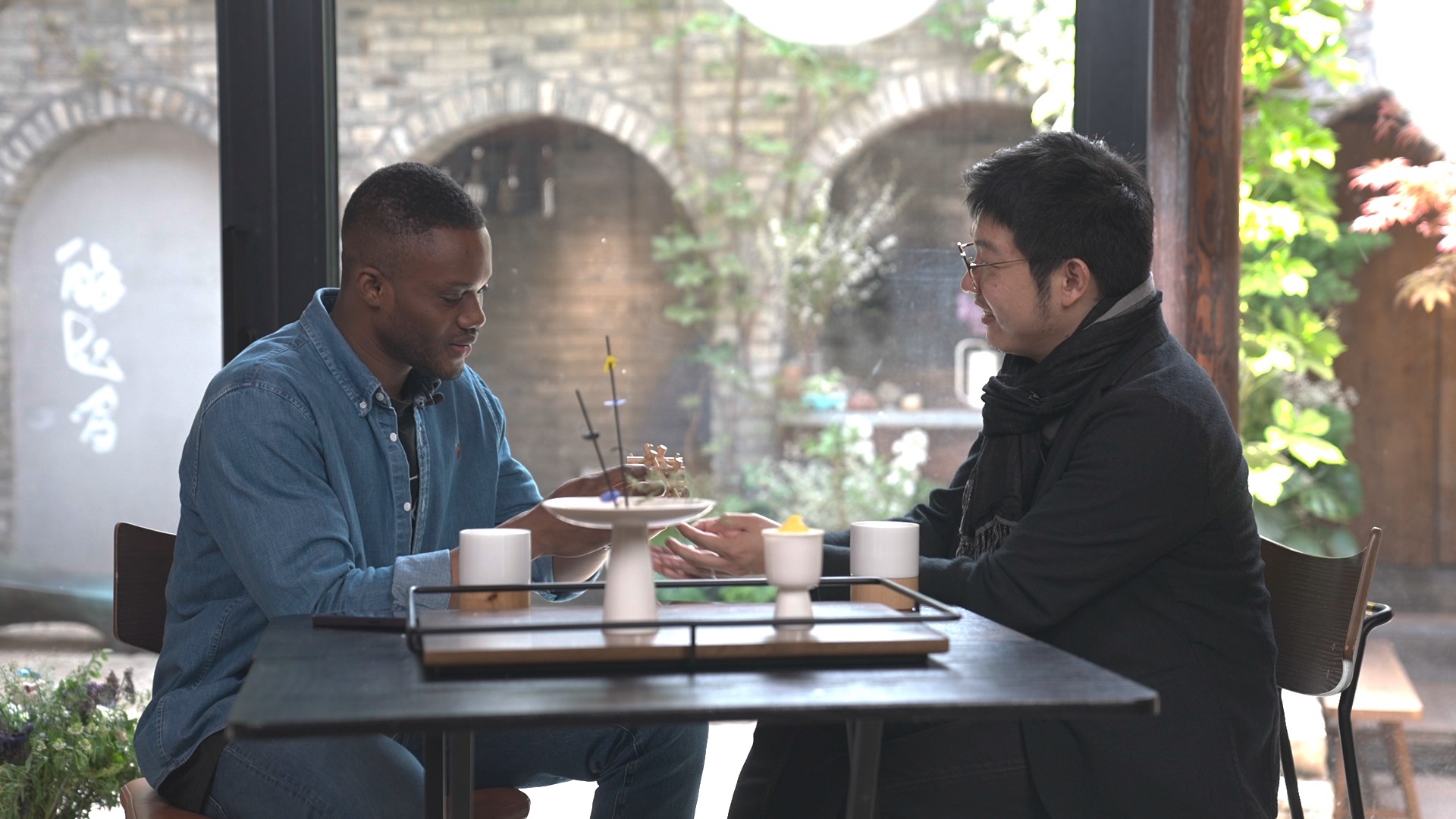A north-south axis running through the center of Beijing is a showpiece of Chinese culture, three international visitors recently discovered. Featuring ancient temples, historic neighborhoods and museums, the area continues to unveil the wonders of cultural heritage passed down over thousands of years.
11:55

Jorge Canalejas Cano of Spain, Michael Harford of Nigeria and Nik Gu of Russia, were recently able to study these wonders as they explored the axis. Their adventure was recently featured in the new video series Discovering China Beijing, a joint production of the Center for Language Education and Cooperation of the Ministry of Education and China Media Group Mobile.
By visiting the central axis of Beijing, they were able to engage in conversations with the past, present and future, aiming to explore the evolution of this pluralistic, inclusive and modern city.
At the Temple of Heaven: a conversation with the past
"Hey young guy, please stand aside, let me take a photo!" a photographer exclaimed to Canalejas Cano. When visiting the ancient buildings at the Temple of Heaven, Canalejas Cano accidentally moved into the photographer's frame. After speaking with the photographer, Canalejas Cano learned much about the design details of the Temple of Heaven as well as the preservation and restoration of China's ancient buildings.

A still shows Jorge Canalejas Cano (right) at the Temple of Heaven in Beijing, speaking with a photographer who loves to take pictures of ancient buildings. /CMG
A still shows Jorge Canalejas Cano (right) at the Temple of Heaven in Beijing, speaking with a photographer who loves to take pictures of ancient buildings. /CMG
In hutongs: a conversation with the present
Harford from Nigeria walked through a hutong, one of Beijing's renowned ancient alleys, to find the New Courtyard. The reconstructed courtyard not only retained the original building structure and traditional woodcrafts such as mortise and tenon, but also blended in contemporary design concepts, forming a New Courtyard combining both Asian aesthetics and Western design elements. Sitting in the enchanting living room, Harford and the designer of the courtyard Hai Peng shared their experiences of studying abroad while sipping spring tea.

A still shows Michael Harford (left) chatting with Hai Peng, a courtyard designer, in Beijing. /CMG
A still shows Michael Harford (left) chatting with Hai Peng, a courtyard designer, in Beijing. /CMG
At China Science and Technology Museum: a conversation with the future
Nik Gu from Russia visited the China Science and Technology Museum. The robots exhibited at the museum can be applied in the service field and other fields such as production lines of plants, AI bionic technology and AI calligraphy. Nik Gu learned that these robots were independently developed by Chinese enterprises based on two core technologies, namely cloud brain and intelligent flexible joints. At present, they have been widely used in industry, agriculture, medical care and so forth, fully demonstrating the innovative development of China in the field of new science and technology.

Nik Gu talks with an intelligent robot at China Science and Technology Museum in Beijing. /CMG
Nik Gu talks with an intelligent robot at China Science and Technology Museum in Beijing. /CMG
The destinations along the axis that the three expats visited form a path from the past to the future. These conversations about ancient and modern civilzations offer good opportunities for people from around the world to explore the profound historical origins of traditional Chinese culture and experience the open and inclusive nature of contemporary China.